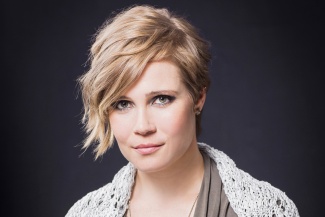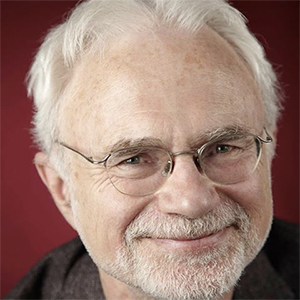by Jarrett Hoffman

“We can talk endlessly about the narrative of this piece, and what it means, and what it symbolizes,” she said during a recent telephone conversation. “But man, what I really love is that at the end of the day, it’s just a great, great piece of music. Even if it had no narrative, no political agenda, it would still be a total masterwork.”
Josefowicz, for whom Adams wrote Scheherazade.2, will tackle the concerto this week with The Cleveland Orchestra behind her, and Adams himself on the podium to her side. The rest of the program is fascinating too. Adams will take the Orchestra for a Short Ride in a Fast Machine — another of his own works — in addition to leading two pieces by Copland: the Suite from Appalachian Spring (in its 1945 orchestration) and Quiet City, featuring two Cleveland Orchestra members as soloists, principal trumpet Michael Sachs and solo English horn Robert Walters.
Trust Josefowicz — the concerto is incredible, and would still dazzle without any narrative aid. That said, it’s still worth digging into the story of why it was written. After reading the collection of Middle Eastern folk tales known as One Thousand and One Nights, and seeing how casually several stories treat the subject of violence against women, Adams felt himself wanting to write a contemporary retelling of the tale of Scheherazade.
That mythic character famously told fascinating stories to her brutal husband, one evening after the next, in order to keep him from beheading her. But while that Scheherazade was known for her guile, Adams’ modern version is “an empowered woman, a Scheherazade who could talk back to authority,” he says in a video about the concerto.
And there couldn’t have been a better match than Josefowicz, his friend and close collaborator of several years — and a 2008 MacArthur “Genius Grant” recipient. “I find Leila a perfect embodiment of that kind of empowered strength and energy that a modern Scheherazade would possess,” he writes. The violinist told me she sees the character as “very wise and brave beyond her years. She’s not going to follow the customs, traditions, and expectations of these men who want her to stay in her place.”
(As a side note, Adams’ concerto may sound like a #MeToo-inspired piece, but it predated that movement by over two years. “He’s sort of prophetic with the subject matter he chooses for his works — he’s very brilliant in that way,” Josefowicz said.)
To the violinist, the narrative is fairly straightforward — until the end, after Scheherazade is condemned to death by the ‘Men with Beards.’ “Either she escapes, or she’s resurrected,” Josefowicz said. “There is that open question mark, which I think is more interesting for the listener to ponder. And in some ways the music also leaves that question mark. After being in this tumultuous, spiritual, and dangerous journey of the modern Scheherazade, you get to decide for yourself what happens, and there’s no wrong answer.”
Josefowicz has worked with several of the top composers of our time, and during those collaborations, she hasn’t been afraid to say when something isn’t working in a piece. When asked about the give and take during the writing of this concerto, she said, “The first movement was completely changed. It used to start out much more virtuosic and flashy, and we decided to give it more of a lyrical beginning, which I think really sets the scene for the whole piece. It’s more illustrative of this wise young woman who is not yet endangered — and then becomes endangered. It makes that danger feel more real, more precarious, more suspenseful.”
Another big revision came in the last movement. “He gave me the first draft, and as I was playing it for him, he kind of punched himself and said, ‘This is too much like my first violin concerto.’ Now I think the last movement is one of the best things he’s ever written. It’s very unique.”
How can you not wonder what goes on in the minds of the world’s top performers while they’re working on their craft? Josefowicz sometimes thinks of a hero of hers, Amy Winehouse. “If I’m having trouble getting a phrase a certain way, and I think, ‘how would Amy sing it?’ and then I play, it’s always better,” she said.
“I think what I’m saying is that I had such a strong traditional training, which was essential, and I wouldn’t be the player that I am now if I hadn’t had that. But I also found it extremely constricting. If I think of Amy, it loosens things for me, and I can kind of escape the classical music box. And that’s one of the reasons why I’m doing the kind of music that I’m doing.”
This week’s performances take place at Severance Hall on Thursday, November 29 at 7:30 pm, Friday, November 30 at 7:00 pm, and Saturday, December 1 at 8:00 pm. Michael Strasser, Professor of Musicology at Baldwin Wallace Conservatory, will talk about the music in Reinberger Chamber Hall an hour before each performance.
Published on ClevelandClassical.com November 27, 2018.
Click here for a printable copy of this article




